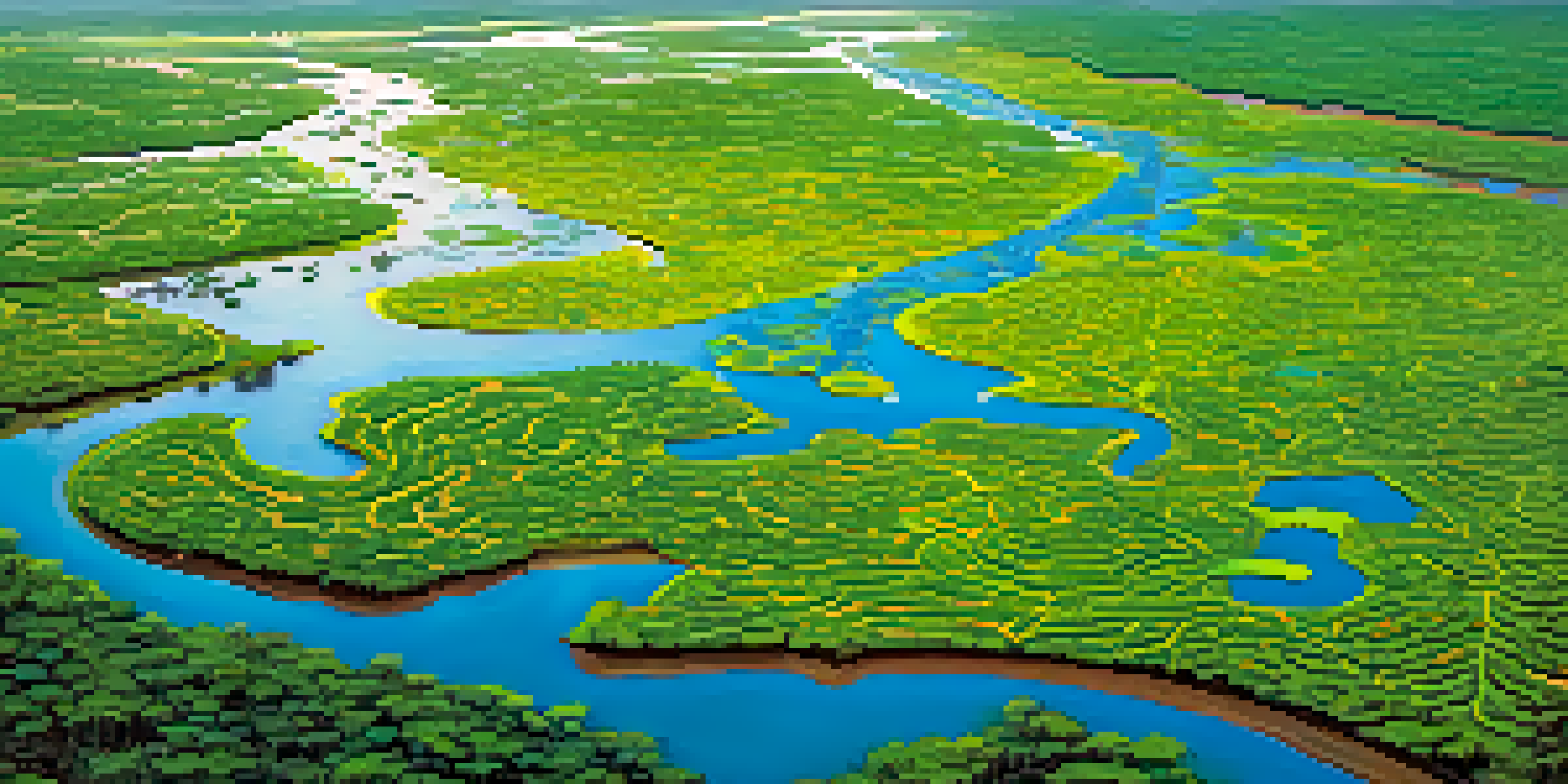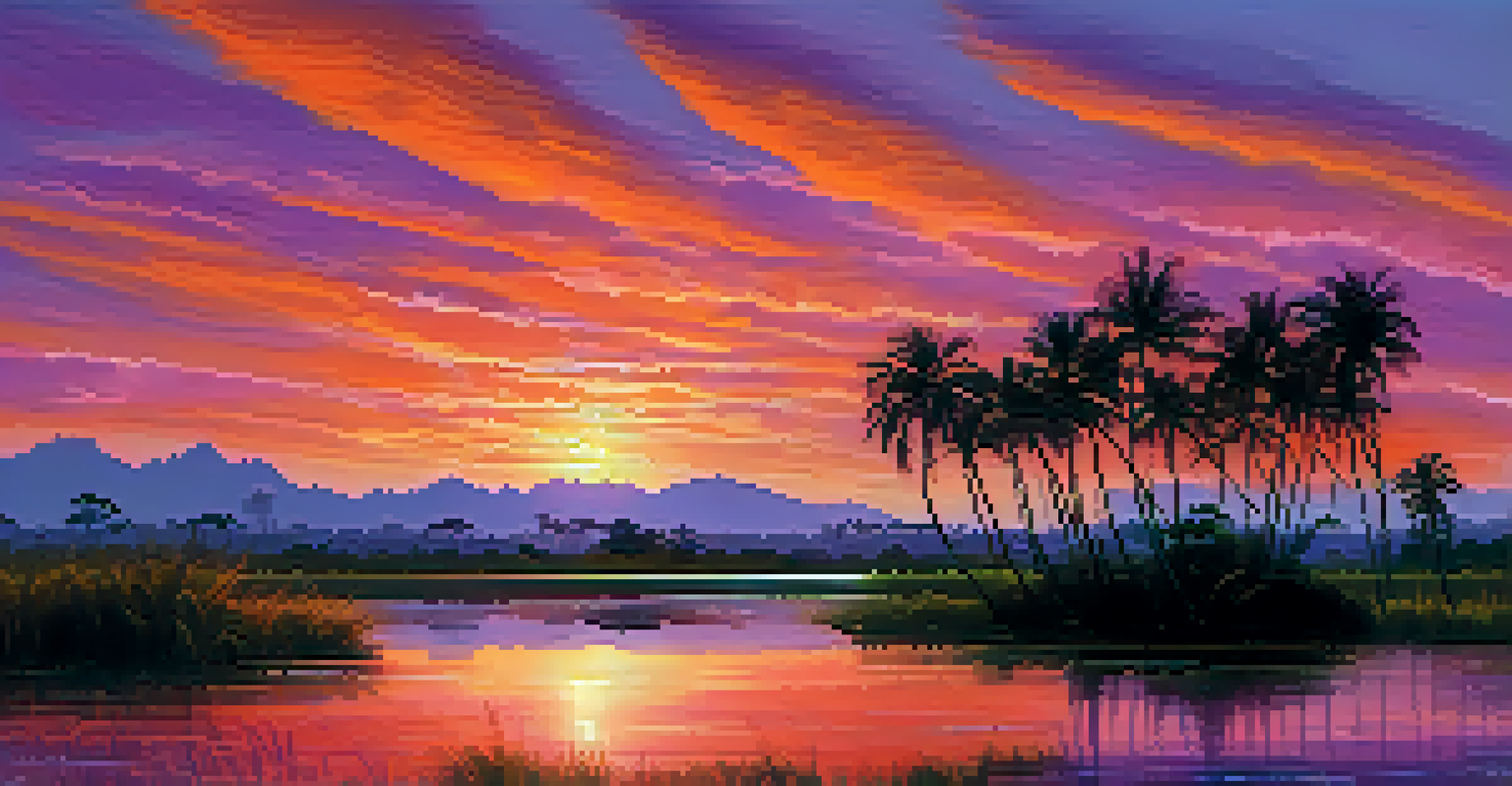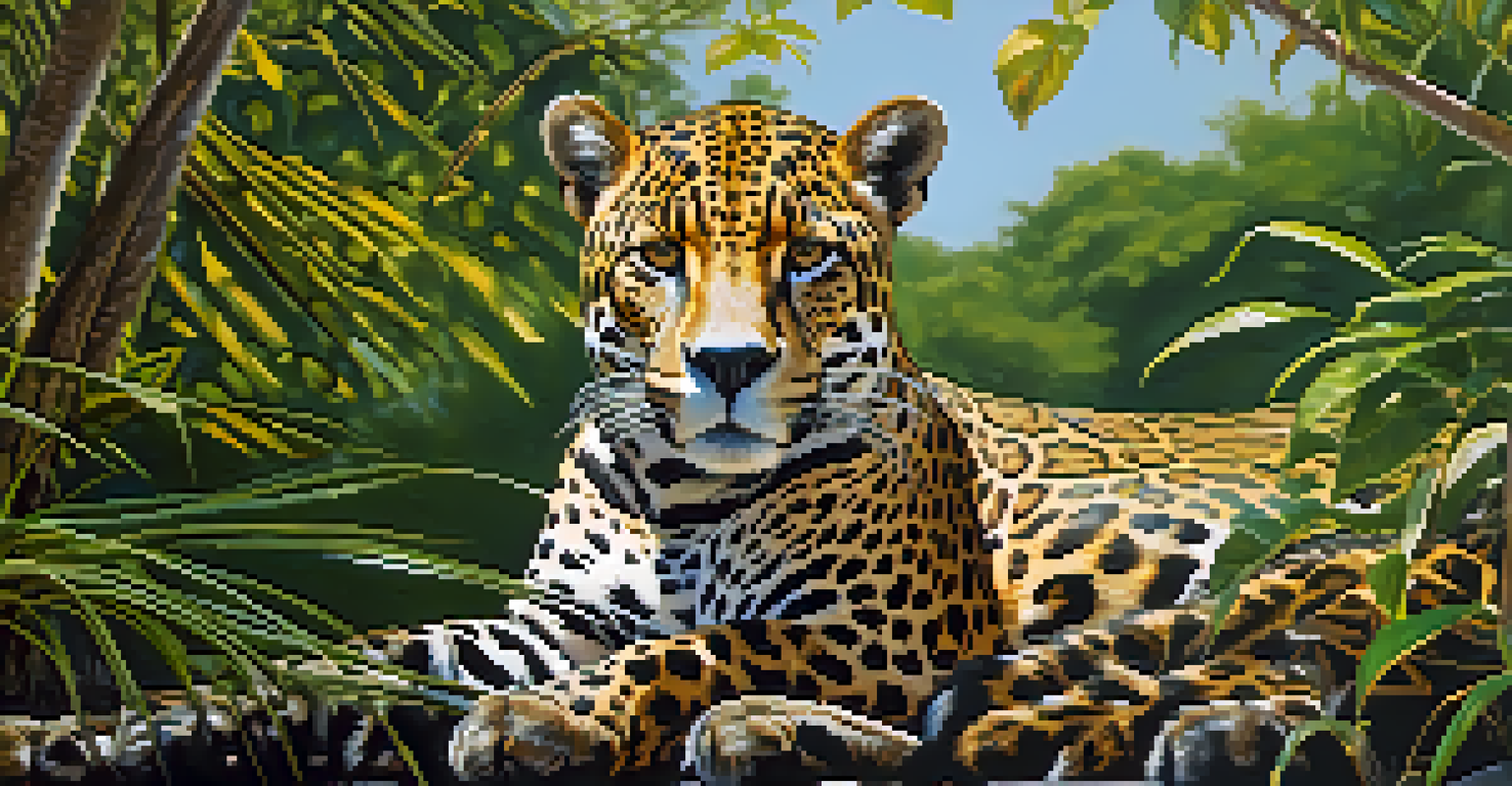The Pantanal: Tips for Capturing Brazil's Wetland Wonders

Understanding the Pantanal: A Unique Ecosystem
The Pantanal is the world's largest tropical wetland, spanning over 75,000 square kilometers. This remarkable ecosystem is home to an incredible diversity of wildlife, including jaguars, capybaras, and over 600 bird species. If you're looking to capture nature's beauty, this is the place to be.
In every walk with nature one receives far more than he seeks.
Unlike other ecosystems, the Pantanal experiences seasonal flooding, which creates a dynamic landscape that changes throughout the year. This unique characteristic offers varied photographic opportunities, from vibrant green wetlands to stunning sunsets reflecting off the water. Understanding these seasonal patterns can help you plan your visit and optimize your photos.
As you prepare for your adventure, remember that the Pantanal is not just a place for wildlife; it’s a living tapestry of culture and natural beauty. Engaging with local communities can enrich your experience and provide you with unique perspectives to capture in your photography.
Best Times to Visit for Photography
Timing your visit is crucial for capturing the Pantanal at its best. The dry season, from May to September, is ideal for wildlife sightings as animals gather around dwindling water sources. This is when you'll have the best chance to capture unforgettable moments in nature.

On the other hand, the wet season, from November to March, transforms the landscape into a lush paradise. While wildlife may be harder to spot, the vibrant colors and reflections in the water can create stunning images. Consider what type of photography you want to achieve before choosing your travel dates.
Explore Pantanal's Diverse Wildlife
The Pantanal is home to a rich variety of wildlife, making it an ideal destination for nature photography.
Regardless of when you visit, be prepared for sudden changes in weather. The Pantanal can experience sudden rain showers, especially during the wet season. Keeping your camera gear protected while remaining ready to shoot can lead to some of the most dramatic and beautiful photographs.
Essential Gear for Pantanal Photography
Having the right gear is crucial for capturing the stunning landscapes and wildlife of the Pantanal. A DSLR or mirrorless camera with a versatile zoom lens (like 70-200mm) will help you capture everything from expansive vistas to close-up shots of animals. A sturdy tripod can also be beneficial for shooting in low light or long exposure shots.
Photography is the story I fail to put into words.
Don't forget to pack extra batteries and memory cards, as you don't want to miss any moments due to equipment failure. Also, a waterproof camera bag will protect your gear from the unpredictable weather and the humid environment of the wetlands. Investing in a good lens cleaning kit is also wise, as dust and moisture can quickly accumulate.
Finally, consider bringing a polarizing filter. This accessory can help reduce glare from water surfaces and enhance the colors in your photographs, making the vibrant greens and blues of the Pantanal pop. With the right gear, you're well on your way to capturing the beauty of this incredible ecosystem.
Choosing the Right Location for Stunning Shots
The Pantanal is vast, and knowing where to go can make all the difference in your photography. Popular locations include the Transpantaneira Highway, which offers numerous spots for wildlife viewing and photography. Here, you can find jaguars lounging on riverbanks or capybaras grazing in the grasslands.
Another fantastic spot is the Porto Jofre area, well-known for its high concentration of jaguars. Boat tours along the rivers provide unique vantage points for capturing these elusive creatures in their natural habitat. Planning your route ahead of time can help you maximize your photographic opportunities.
Timing Matters for Best Photos
Visiting during the dry season enhances wildlife sightings, while the wet season offers vibrant landscapes for photography.
Don't forget to explore lesser-known areas as well. With fewer tourists, these hidden gems can provide more intimate wildlife encounters and unique landscapes. Sometimes, the most breathtaking shots come from venturing off the beaten path.
Techniques for Capturing Wildlife in Action
Photographing wildlife requires patience and an understanding of animal behavior. Spend time observing your subjects before shooting. This can help you anticipate their movements and capture those perfect moments, whether it’s a jaguar leaping or a bird taking flight.
Using a fast shutter speed is essential for freezing action, especially in low light. Try experimenting with different settings to find what works best for the conditions you're in. Burst mode can also help you capture multiple frames in quick succession, increasing your chances of getting that perfect shot.
Remember, the best wildlife photography often tells a story. Focus on the interactions between animals and their environment, or the unique characteristics that make each species special. These elements add depth to your images and can evoke powerful emotions in your audience.
Best Practices for Landscape Photography
When it comes to landscape photography in the Pantanal, composition is key. Use the rule of thirds to create a balanced image by placing points of interest off-center. This can make your photos feel more dynamic and engaging.
Experiment with different angles and perspectives. Sometimes, getting low to the ground can provide a unique viewpoint that showcases the vastness of the wetlands, while capturing reflections in the water can add depth to your compositions. Don’t be afraid to get creative with your framing.
Respect Nature While Capturing Beauty
Maintaining a safe distance from wildlife and following local guidelines ensures the preservation of the Pantanal's ecosystem.
Golden hour, the time just after sunrise and before sunset, offers stunning natural light for landscape photography. The soft, warm tones can enhance the beauty of your images, creating a dreamy atmosphere. Plan your shoots around these times to make the most of the Pantanal's enchanting landscapes.
Respecting Nature and Wildlife While Photographing
As a photographer, it's essential to respect the environment and wildlife you're capturing. Keep a safe distance from animals to avoid disturbing them or their habitat. Using a zoom lens allows you to photograph wildlife without getting too close, ensuring both your safety and theirs.
Follow local guidelines and regulations, especially when it comes to accessing protected areas. These rules are in place to preserve the delicate balance of this ecosystem and to ensure that future generations can enjoy its wonders. Being a responsible photographer not only benefits the environment but also enhances your experience.

Lastly, leave no trace. When exploring the Pantanal, carry out whatever you bring in, and avoid leaving any litter behind. By being a conscientious visitor, you help preserve this beautiful wetland for others to enjoy and photograph in the future.